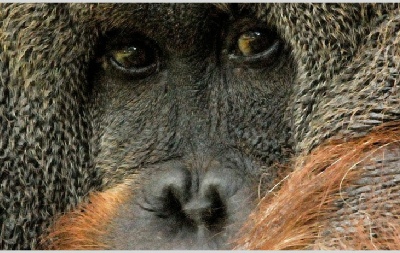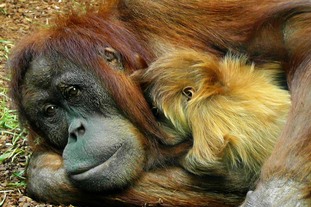


Great Ape Project UK © 2018. All Rights Reserved.

A life that prizes individuality
If we were to compare human behaviors to the great primates’ it would be easy to identify the orangutans as the representative of the modern and even more frequently “living alone and well style”. Males and females get together only at reproduction time. Mothers take care of their babies all by themselves until they reach maturity. As soon as they feel safe, the youngsters enter by themselves in the forest in search of an independent life.
But there is a relevant characteristic in this quick sexual intercourse, where there is no commitment of the males on children upbringing. Rapes happen in every other group of great primates, but female orangutans are the only ones who resist to sexual assault and are able to have a physical fight with the male. In this group females are the ones who choose the males, not the other way round.
Orangutans are also the kings of handicraft. You just have to look up on the trees of Sumatra and Borneo to see the fabulous suspended “beds”. They are made with a lot of branches and leaves and can bear up to 100 kilograms (approximate weight of a male). Beds are built in the end of afternoon as long as the individual crosses the wood looking for a new place to rest. Orangutans share 96,3% of the human DNA.
Think about this example
Chantek is an orangutan who lives at Atlanta zoo and uses around 200 signs to communicate with humans. He answers talking spoken questions of his keepers with the sign language and also tells them what he wants, as a type of food or entertainment. For instance, he enjoys very much to play puzzle.
Orangutans
